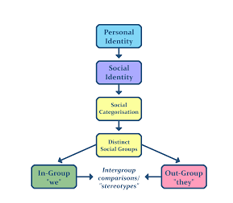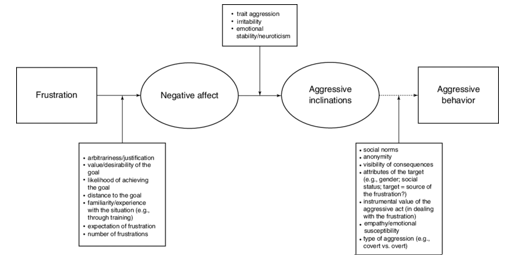Get free samples written by our Top-Notch subject experts for taking Online Assignment Helper services in the UK.
This assignment focuses on “Psychology for Health and Social Care”. Psychology for Health and Social Care includes the psychological and social factors that are associated with physical illness, the impact of illness on an individual, psychological intervention and so on. The significance of this assessment is to inform the role of psychological factors on health and illness, particularly on those individuals who are associated with health and social care services.
In this assessment, the focus will be given to the psychological changes of Gareth Jones and the impact of his current psychology on health and social care. In this assessment, to understand the impact of Psychology on health and social care, a thorough discussion on Social Identity Theory, Theory of Planned Behaviour, and Frustration Aggression Hypothesis will be carried out in reference to the case study.
Get assistance from our PROFESSIONAL ASSIGNMENT WRITERS to receive 100% assured AI-free and high-quality documents on time, ensuring an A+ grade in all subjects.
According to Hogg, (2016), social identity is an integral part of an individual that can be referred to by one’s identity within society. Social Identity Theory was first formulated and opined by social Psychologists Henri Tajfel and John Turner in the 1970s. as per their proposal, in broader society, people often face some condition or scenario where social identity becomes “more” important than one’s identity as an individual. This theory is also essential as it specifies the ways by which social identity can influence one’s behaviour. Social Identity Theory is based on three cognitive factors: social identification, social categorisation and social comparison. This theory is also based on three mental processes that an individual used to go through when it comes to making out-group/in-group classification. The first process is social categorisation, where an individual intends to include himself in a social group to understand society (Pan et al., 2019). This process also emphasises assessing similarities of people in the same group and differences between people in other groups.
(Figure 1: Social Identity Theory)

The second process is social identification. This process refers to people who identified socially by a group intended to act in the way that they think the member of that group will follow him or behave the same way. For example, if an individual defines himself as an environmentalist, he will focus on conserving natural resources and strategy implementation for waste management. And he will also try to make others in the group aware of the process. the third process is social comparison (Hogg, 2018). It is the process by which an individual can compare a group with other groups using social values and ethnicity. In this process, one must perceive his in-group as holding higher social standing than the out-group to maintain self-esteem. For example, a movie star always looks himself superior to the reality TV actor but yet perceives lower social standing in comparison to the classically trained actor.
Considering the case scenario and the concept of Social Identity Theory, Gareth can be categorised as he belongs to a specific group (in-group) which is different from others (out-group) (Van Knippenberg, 2020). Additionally, according to the concept of the theory, after doing good in the parole board hearing and taking admission to the college course, Gareth intended to associate with the people or the group who are associated with some criminal offence or drug misuse in society. This group is entirely different from that group or out-group, which is comprised of socially responsible people.
Get the support you need for your healthcare studies with our healthcare assignment help, providing expert assistance on everything from healthcare law to disease prevention.
The theory of planned behaviour is a cognitive theory developed by Azjen in 1985. This theory means that every decision taken by an individual is engaged in a specific behaviour. For example, gambling or quitting gambling can be predicted by the intention of an individual who is engaged in that behaviour. As per the theory of planned behaviour, “the ber the intention of an individual to engage in certain behaviour, the more likely will be its performance and outcome” (Tornikoski and Maalaoui, 2019). According to the Theory of Planned Behaviour, the intention of an individual can be determined by three variables: personal attitudes, subjective norms and perceived behavioural control. The personal attitude of an individual is the summation of knowledge, prejudice, ethnicity, and belief of that person. The attitude can be positive or can be negative, depending on the individual’s perspective. For example, drug misuse or associated with offensive works are normal for Gareth. Still, for society and for others, these activities are considered criminal offences, and Gareth is determined as a felonious person for society (Razali et al., 2020).
The subjective norms consider how one views others’ ideas about a specific behaviour. For example, misuse of drugs and drug supply. This is the common attitude for Gareth and his fellow. Though, it is not an appropriate behaviour that people think of. Similarly, after behaving well in the parole board hearing, Gareth represented himself as good and took admission to college for an automotive maintenance and repair course. This behaviour seemed to the enthusiastic and positive for others (Shalender and Sharma, 2021). Though, his association with people who are associated with his conviction without taking classes in college is the negative subjective norms or behavioural approaches.
Perceived behavioural control is another factor of this theory. It refers to the extent to which “we” believe that “we” can control our behaviour (Ru et al., 2019). This approach depends on the perception of many internal factors, like own ability and determination, and external factors, like resources and support available to an individual. However, the theory argues that the perception of behavioural control has two consequences. It can affect one’s intention to behave in a certain way, that is, more control over one’s thinking and behavioural approach. as per this concept, Ru et al., (2019) has mentioned that “ more control on behaviour, it will strengthen the intention to perform the perfect behaviour” (Daxini et al., 2019). This theory states that perceived behavioural control is combined with behavioural intention, which can be used to predict behavioural achievement directly. Considering perceived behaviour of Gareth, it can be stated that verbal aggression is enrooted with the prior behavioural approach or attitudes of Gareth, as from a very young age he was involved in offensive activities like drug possession with intent to supply, being caught by police for multiple times.
The frustration Aggression hypothesis was first proposed by Dollard and his colleague in 1939. According to this theory, frustration always produces aggressive urges, and it causes frustration among people. According to Battigalli et al., (2019), aggressive behaviour stems from a goal’. Considering the case scenario, social isolation or discrimination or any social or family restriction can be the root cause of aggressive behaviour of Gareth, which led him to be involved in illegal activities. On the other hand, association with the people who are associated with illegal activities and torment by police might lead Gareth to a frustrating scenario, which in turn gave rise to aggressive verbal behaviour in him. This hypothesis can be used in studies of hate crime and scapegoating, which indicate the actual scenario of Gareth and his source of frustration which might be accumulated with the economic crisis.
(Figure 2: Frustration-aggression hypothesis)

The frustration-aggression hypothesis was utilised to provide insight into the processes of stereotyping, prejudice, and out-group antagonism in the context of intergroup encounters. The frustration-aggression hypothesis has perhaps been applied to the study of prejudice, most famously through the scapegoating theory. According to the theory, the displacement of aggression for the socially sanctioned victim like Gareth refers to many sides of the frustration-aggression hypothesis. It refers to the channel of expression of aggressive impulses, identifying the cause of socially undesirable impulses and creating cathartic relief once the aggression is suppressed. As per this theory, Gareth Jones is a scapegoat due to “goal-response suffer interference” (Battigalli et al., 2019).
Conclusion
Considering the case scenario, it can be seen that Gareth is a 17 years old boy who is going through re-offending behaviour. The YOT, or Youth Offending Team, struggles to understand his behaviour. Gareth Jones was previously served 18 months of motoring offence and possession of drugs to supply at Parc Young Offenders Institutes. Though after showcasing good behaviour at the parole board hearing, he decided to enrol himself in college for education purposes, though, after investigation, it was seen that Gareth Jones is again involved in offensive activities with a group comprised of similar people. Afterwards, when he was recommended for a probation visit, he showcased aggressive behaviour to people. In this assignment, several psychological theories have been used to reference the case scenario. This assignment aims to discuss the characteristic approach or behavioural intention of Gareth through different theoretical concepts.
Reference
Introduction Don’t let assignments stress you out! Our Assignment Help Online services are here to provide...View and Download
Introduction: How Business Can Benefit From Sustainable Business Practices Get free samples written by our Top-Notch...View and Download
Introduction Get Free Online Assignment Samples from UK's Best Assignment Help Experts to boost your academic...View and Download
Introduction: Enhancing Teamwork Our organisations continuously focus on working in a team or group to progress towards a common...View and Download
Introduction Get Free Online Assignment Samples from UK's Best Assignment Help Experts to boost your academic...View and Download
Introduction Get Free Online Assignment Samples from UK's Best Assignment Help Experts to boost your academic...View and Download
offer valid for limited time only*

